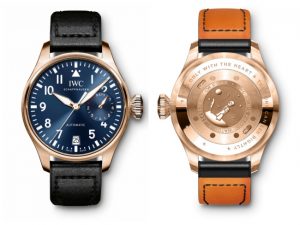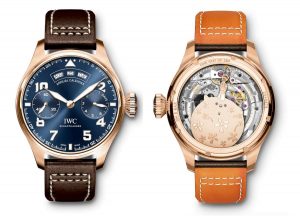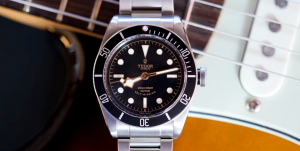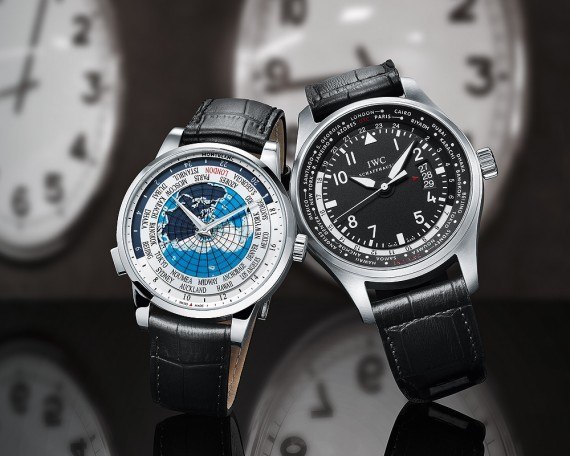
How does it go again? Do I set my watch forward or back on my way to China? Is my business partner in Dubai awake or asleep? A world-time watch can answer all such questions.
The pilots’-watch look of the IWC Pilot’s Watch Worldtimer conveys both the reason and need for this kind of timepiece. Pilots orient themselves solely on the coordinated world time known as UTC. The Worldtimer is the obvious next step in development from the 1998 IWC pilots’ watch and its second time zone – helping travelers who quickly move through different time zones keep their home time in mind. It can also help managers keep track of business partners in various locations around the world.
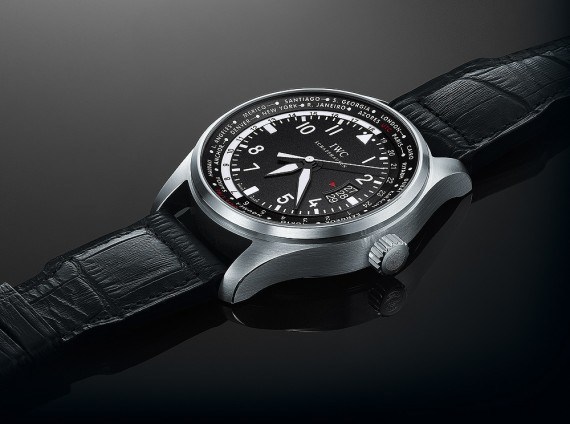
The Worldtimer has maintained the look of a typical IWC pilots’ watch review with its white numerals, markers and hands, clear minutes track and prominent triangular orientation marker at 12 o’clock. The matte, black background improves legibility, and luminous material on essential elements means you can read the watch in the dark. The elongated date window (which mimics the look of an airplane altimeter) is new, as are the city and 24-hour day/night rings for the world-time function. Both adhere to the black-and-white pilots’-watch design code and are just as easy to read as the time. The case is 45 mm in diameter and has a nonreflective sapphire crystal.
The Montblanc Heritage Spirit Orbis Terrarum gives a very different view of world time. Its perspective originates, as its name suggests, from our big, blue planet – to be precise, our big, blue planet as seen from the North Pole. It’s hard to escape the sense that you’ve seen this somewhere before. Right – it was the Patrimony Traditionnelle from Vacheron Constantin. Impossible to think otherwise. The Patrimony was quite similar in its approach, but according to Montblanc, the world-time module is of its own design and is distinguished by the arrangement of the disks, the number of time zones and its mode of operation – in this case via a pusher at 8 o’clock instead of a crown like the Patrimony.
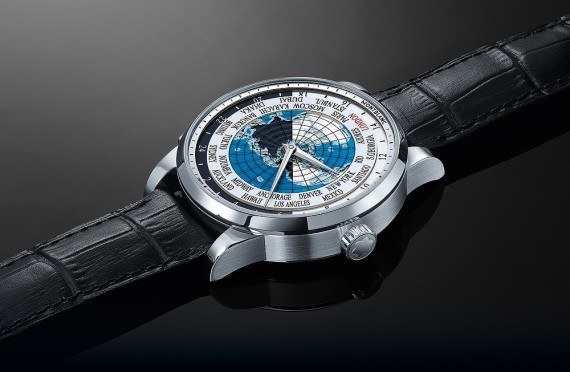
The watch makes a good first impression. The center of the dial offers a beautiful view of earth from above. The names of 24 cities, representing the different time zones, encircle the dial on a white ring. The 24-hour ring, with a day/night division, is outside the city ring. It’s fascinating to watch the shifting dark-blue section of the dial as it shows the nighttime hours between 6:30 pm and 6:30 am.
The home time is read from the city ring and the new local time is read from the two center-mounted, faceted dauphine hands. Unfortunately, none of this can be seen in the dark, and even in daylight the legibility of the Heritage Spirit Orbis Terrarum is not as good as that of the IWC Worldtimer.
The Montblanc luxury brand watch is powered by Caliber MB 29.90, which is based on the Sellita SW300 automatic caliber. Because the watch has no seconds hand, the time can’t be set precisely. But the watch does run very well. The IWC contains Caliber 30750, based on the ETA 2892-A2. (Montblanc’s Sellita base movement is structurally identical to the 2892-A2.) During our timing test it ran more precisely than the Montblanc did: its rate results were flawless in every position.
In contrast to the city ring of the Heritage Spirit Orbis Terrarum, that of the Worldtimer cannot be moved. By pulling out the crown all the way, past the time-adjusting position, you rotate the 24-hour ring to align correctly with the “home city.” If daylight saving time is in effect, it is read by following a line ending in a dot, which extends to the following full hour. As long as it is daylight saving time, the local time must be aligned with this dot instead of the city name. Then, via the middle crown position, the hour hand is set to the local time.
When you travel to another time zone, you adjust the hour to the new local time by using the middle crown position. All other positions (minutes and seconds) will remain unchanged and continue to advance. If the geographical change also includes crossing the International Date Line, the date display will accommodate the change by correctly moving the date forward or back. If a manual date correction is required (e.g., at the end of a month) the middle crown position is used to advance the hour until the correct date is shown.
The IWC Worldtimer has several user-friendly features lacking in the Montblanc. These include its seconds hand, date display, daylight-saving feature, higher degree of water resistance (60 meters versus the Montblanc’s 30 meters), extra protection against magnetism, and easy-to-read dial. It also has a much higher price, $8,500.
In contrast, the Montblanc Heritage Spirit Orbis Terrarum appeals to the aesthetically minded with its design-related refinements. Foremost among these is the watch’s attractive world-map dial. The Montblanc’s other visual attractions include the line finish on the case, the raised Montblanc logo on the crown, understated inscriptions on the sapphire caseback, the four screws on the caseback and a double-folding clasp on an alligator strap.
